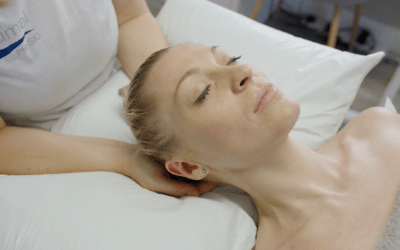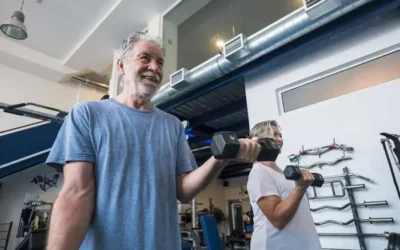Research is challenging widespread beliefs commonly held about low back pain. As Chartered Physiotherapists at Optimal Physio, we keep up to date with research to ensure we provide you with the best possible advice and information to help you recover.
Low Back Pain is common and normal
Eighty percent of people will experience an episode of low back pain during their lifetime. It costs the UK an estimated £1 billion annually.
The majority of acute low back pain is the result of simple strains or sprains to tissues and although pain can be severe, the prognosis is excellent with most cases resolving within 6 weeks.
Scans are rarely needed
Scans only show something truly important in less than 5% of people with back pain. Disc bulges, disc degeneration, herniated discs and arthritic changes are prevalent in people without low back pain. These findings are normal and are an indication of ageing and genetics, not predictors of pain. Discovering you have these changes in the spine can lead to fear, distress and avoidance of activity.
An experienced healthcare professional would usually be able to identify if a scan was necessary based on symptoms and medical history.
Back pain is not caused by something being ‘out of place’
The spine is a very strong structure is designed to move. The fear of something being ‘out of place’ can lead to reliance on healthcare professionals who can ‘put it back in’. Many people feel better after undergoing treatments like manipulation however this improvement is due to short-term reductions in pain, muscle tension and fear; not due to realigning of body structures. Hands-on treatment can be valuable but should always be accompanied with good-quality advice and exercises. Our Physiotherapists adopt an active approach to back pain, providing you with strategies to aid your own recovery and prevent recurrence.
Bed rest is not helpful
In the first few days of an acute episode of back pain, you may have to do less than usual. However, there is very strong evidence that getting back to all your usual activities, including work and hobbies, is vital for recovery.
Prolonged bed rest is unhelpful and is associated with higher levels of pain, greater disability, poorer recovery and longer absence from work.
Pain does not mean damage
Pain research shows us that often ‘the tissue is not the issue’. The degree of pain felt can vary according to a number of factors including, previous pain experiences, your mood, fears, fitness, stress levels and coping mechanisms.
Our nervous system regulates how much pain a person feels at any given time. Persistent pain can lead to the nervous system becoming hypersensitive and pain can continue even though the initial strain or sprain has healed.
This can mean the person feels more pain when they move or try to do something, even though they are not damaging their spine. Learning to distinguish between the ‘hurt’ from any concerns about ‘harm’ is important in recovering fully.
The perfect sitting posture may not exist
Different sitting postures suit different people, with some people reporting more pain from sitting straight, others from slouching. So while slouching gets a bad press, many people with back pain can adopt very rigid postures, which can also lead to pain. Varying our posture and learning to move in a confident, relaxed and varied manner is important for a healthy back. Your best posture is you next one.
Lifting and bending are safe
The message has often been that lifting, bending and twisting are dangerous and should be avoided. However research does not support an association between these factors and low back pain.
Of course, you can strain your back by lifting something awkwardly or something that is heavier than you would usually lift. If you have back pain, these activities might be more sore than usual. This, however, does not mean that the activity is dangerous or should be avoided.
In fact being able to lift, bend a twist are important functions of the spine and should be practiced. An experienced Physiotherapist can guide you on this.
Sleep, stress and mood influence back pain
When you have pain, a good night’s sleep can be hard to get and sleep problems can lead to back pain in the future. In the same way that poor sleep and stress can cause headaches or make us feel tired or down, it can also cause back pain.
Managing stress, mood and anxiety levels by doing the things we enjoy and engaging in relaxation can be really beneficial in helping back pain.
Exercise is safe and helpful
Regular exercise helps to keep you and your body fit and healthy and reduces pain and discomfort. It relaxes muscle tension, helps mood and strengthens the immune system. When you are in pain, starting exercise can be very hard. Under-used muscles feel more pain that healthy muscles. But feeling sore after exercise does not indicate harm or damage to the body.
All types of exercise are good, with no major differences in effectiveness between them – so pick one you enjoy, can afford and which is convenient.
Persistent back pain CAN get better
Since low back pain is associated with many factors that vary between individuals, treatments must consider what is relevant for each person. Failing to get relief after lots of different treatments is very frustrating and cause people to lose hope.
By identifying the different contributing factors for each individual and trying to address them all, pain can be significantly reduced and people can live a happier and healthier life.
If you have been suffering from persistent or intermittent back pain for years or know someone who has, then it is now time to take action. Why not make an appointment with one of our expert physiotherapists and we can assess the cause and identify how to make your pain better.
To book an initial assessment please call 0333 301 0205 or book online at optimalphysio.co.uk.
#lowbackpain #specialists #physiotherapy #rehabilitation #backpain #largs #newtonmearns #physio





0 Comments